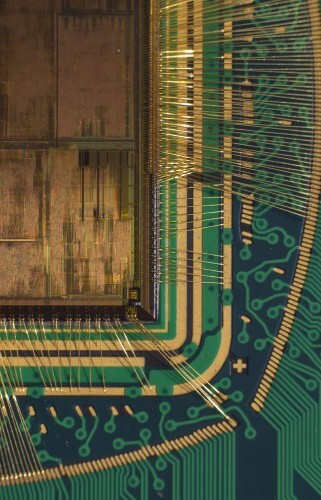Progress in the relatively new field of electronic nano-components could form the basis for new production processes and devices as part of the development of original systems and technologies to produce renewable energy in a more efficient and economical way.

Nanoscale technologies are an important factor contributing greatly to the advances required to realize the potential of clean and renewable energy sources.
Progress in the relatively new field of electronic nano-components could form the basis for new production processes and devices as part of the development of original systems and technologies to produce renewable energy in a more efficient and economical way.
Researcher Stephen Goodnick will focus on the ability of developments in the field of electronic nano-components to help improve the performance of next-generation solar energy systems, during his lecture as part of the 2014 annual conference of the American Association for the Advancement of Science (AAAS) to be held in February in Chicago, USA.
Gudnik is a professor in the School of Electrical, Computer and Energy Engineering at Arizona State University. As part of his lecture entitled: "Paths for the development of next-generation photovoltaic devices", the researcher will explain how inventions resulting from research in the field of electronic nano-components can cause photovoltaic technologies to significantly improve our ability to convert sunlight and heat into electrical energy.
The researcher will particularly delve into how new types of devices based on nanostructures can contribute to the development of photovoltaic solar cells that can achieve higher energy conversion efficiency. The researcher explains that the key to the ability of these materials to contribute to the field lies in the differences in the properties, properties and behavior of materials at the nanometer level.
One nanometer is one billionth of a meter. 100,000 nanometers is equal to the thickness of a sheet of paper. At such a tiny scale, silicon and other materials used in the production of solar cells may behave in ways that increase the efficiency of devices designed to produce energy, the researcher explains. "With the help of the use of nanoparticles organized in the form of nanostructures, it is possible, for example, to improve the rate of optical collection, which will cause the systems to capture a greater amount of light for its conversion into electrical energy," says the researcher. "With the help of nanomaterials, we can produce even tinier solar cells that will operate with higher efficiency, and in addition, we can increase the capacity of energy storage devices," explains the researcher.
Such progress will be based on the success of scientific and engineering research to overcome today's high production costs and a number of technical challenges. But the researcher claims that he puts his trust in the advances in the field of nanotechnology "which are expected to be the most important factors in future types of energy."

One response
Admittedly a likely scenario, but at the moment it's mostly a rumor. "Trusting evolution" is not science even if a scientist said it